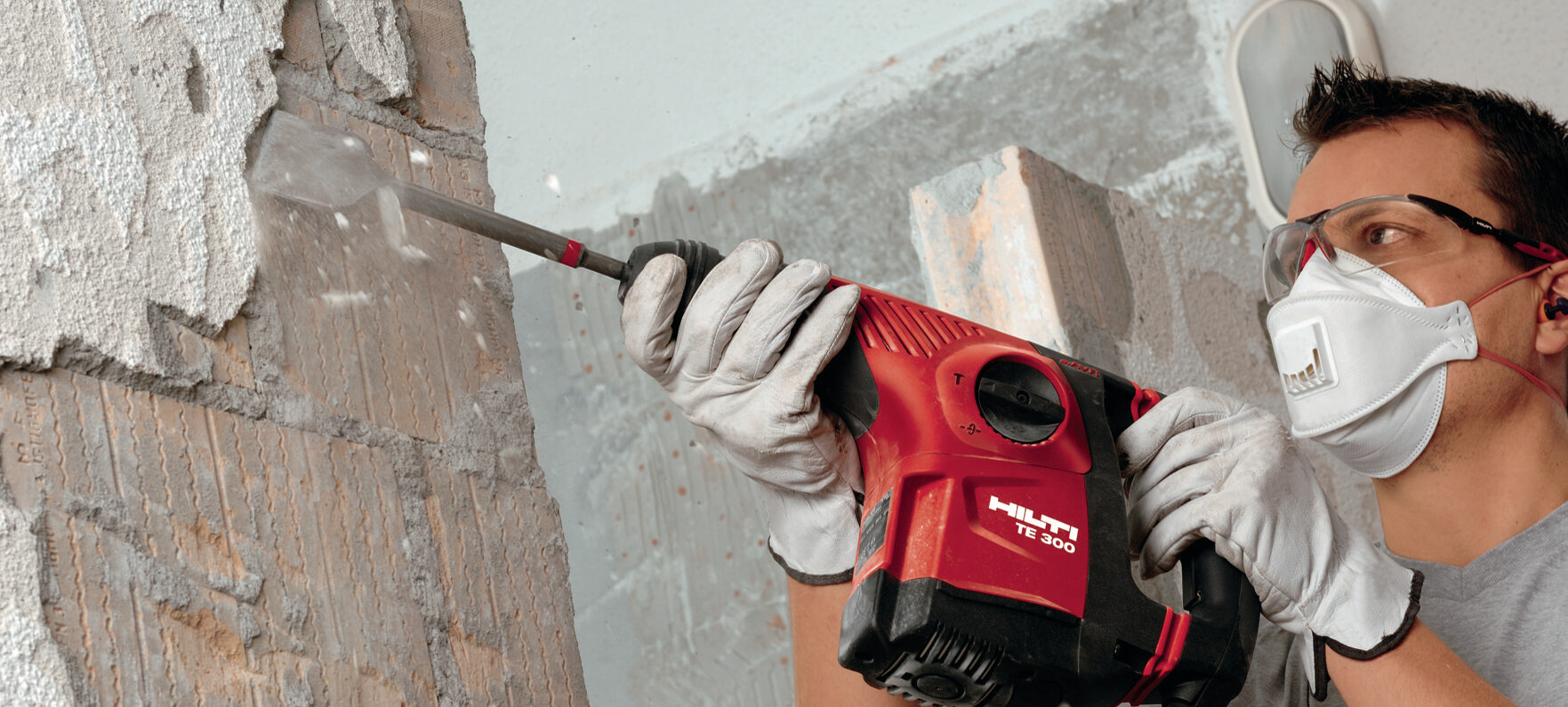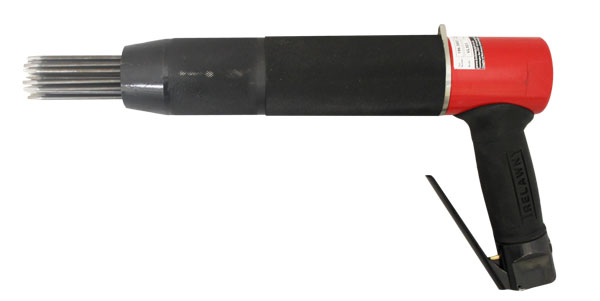
Needle gunning is the process in which a needle gun or needle scaler services metal surfaces. Needle gunning removes rust, paint, and other surface imperfections of common metalwork.
The process of needle gunning is versatile and useful in the construction industry, automotive applications, boat preservation, and a variety of other practices. In this article, you will learn the process of needle gunning, safety precautions, applications, and alternatives to needle gunning.
The Process of Needle Gunning
The process typically begins with surface preparation. Prepping a surface and removing any large-scale impurities or obstructions that may interfere with the needle gun sets the stage for an even finish. Surface preparations include the removal of dirt, oil, grease, and other contaminants on a surface. Once a surface is ready, the needle gun itself requires specific preparation for the intended application.
A needle gun takes on the shape of a regular gun so the user may hold it easily, however, the ends of a needle gun have multiple chisels which do most of the work. Some refer to the chisels as needles which accounts for the name needle gun. The needles move back and forth at high speeds against the material to knock off impurities.
Tool Specifications

Due to the demand for high power output, needle guns typically operate pneumatically. Electric needle guns are rarer and of use in smaller applications. Pneumatic needle guns use air compression to force a piston forward and backward to create needle motion.
Depending on the application, speed and power output are to be adjusted for different jobs. For example, when needle gunning concrete, a higher speed allows for finer removal and less breakage. Slower speeds on a metal specimen provide easier paint removal.
When comparing a needle gun to other types of scaling tools, it has many advantages. Due to the fast chiseling speed, it is a much quicker tool than other scaling devices. Many modern needle guns have automatic adjustment capabilities to follow contours, edges, and other specific shapes on the object. These features make needle gunning an extremely efficient and precise tool for scaling a surface.
Needle gunning typically requires 2-3 passes over relatively small surfaces to be complete. The typical pattern of scaling follows that smaller areas be done one at a time to promote even removal and manageable areas. Other considerations include the material at hand. For paint removal from metal, smaller areas allow for new coats of paint to reduce the likelihood of rust from forming on the newly scaled surface.
Safety Precautions

The main needle gunning precaution is the proper use of PPE, also known as personal protective equipment. This calls for the use of goggles, gloves, hard hats, and general awareness when needle gunning. When operating a needle gun, inspecting components of the gun for any deterioration is crucial to safety. Operators should ensure that air lines in pneumatic needle guns are secure and in good condition. In the worst case, a bad connection or air line may come undone from the needle gun and become a safety hazard.
Once the needle gun is ready, the next safety consideration is performing the operation. Using gloves and goggles helps prevent injury from any debris or material that comes loose. Similarly, when of use in the construction application, hard hats may prevent serious injury from any falling debris.
Applications
Needle gunning characterizes as a subset of scaling. Scaling is the process in which paint, rust, or any other surface material is taken in layers off of a surface. These surfaces are typically concrete, metal, and other major constructive materials. Needle gunning is one of the most efficient and effective methods of scaling. Due to its versatility, needle gunning is useful in construction, metalworking, and even in boating applications.
In the construction industry, needle guns are useful in removing deterioration in concrete slabs. Similarly, it may also be useful for small-scale removals of concrete in some other applications. Extending into metalworking applications, needle guns are useful in the removal of oxidation, rust, and paint on metal surfaces.
Additionally, in major ships and boats, needle guns are useful in restoring old, oxidized, and peeling paint on ship surfaces. Needle gunning is especially useful on uneven surfaces as the gun is able to adjust the needles to contour into edges, corners, and crevices.
Alternatives

Needle gunning is a single method in the process of scaling. Other alternative methods of scaling include sandblasting, wire brushing, and laser cleaning.
Sandblasting is a method of scaling in which fine particles of sand or other corrosive material force themselves under high pressure against the scaling surface. Dependent on the application, different types of material may be useful as a medium when sandblasting. Softer compounds such as sand may be useful in milder applications whereas metal beads may be useful in rougher ones. Sandblasting is common on concrete structures, pressure vessels, and steel beams.
Wire brushing is another method useful in scaling. Comparatively, it is most useful in small-scale applications. Typically, a steel or metal brush will be placed on a rotating machine while components are forced against it. This method is ideal when scaling small components as wire brushes are most effective when they are smaller. Larger brushes would be much more difficult to control and fairly dangerous to operate.
Lastly, a newer method of scaling is laser cleaning. Laser cleaning utilizes lasers to vaporize surface contaminants on a subject and leave the medium intact. This method is new and fairly experimental but shows great promise in its ability to be precise and easy to use.



